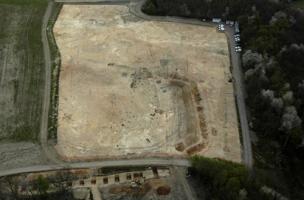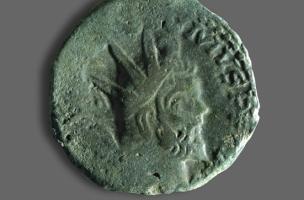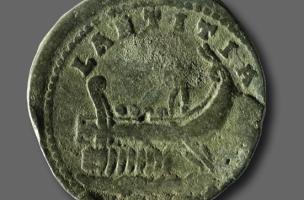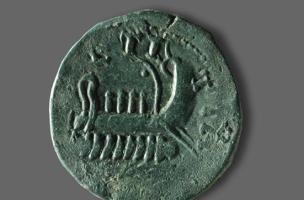You are here
Counterfeit sestertii with an effigy of Postumus at Parville (Eure)
In advance of work on the Evreux city bypass, a team from the Institut National de Recherches Archéologiques Préventives (Inrap) is studying a vast site from the second Bronze Age and the Gallo-Roman period.
The site, occupied from the 1st century BC to the 4th century AD, is located in Parville, a short distance from Roman Evreux. The excavation, curated by the Regional Archaeology Service (Drac Haute-Normandie), will continue until July 2006
A Gallic farm
The Gallic buildings were constructed of wood and soil, and have a rectangular or square plan. Study of these buildings is based mainly on analysis of the postholes for the timbers that supported their walls and roofs.
Agriculture was apparently the principal activity of this establishment. The excavation has found structures necessary for the conservation of agricultural produce, such as underground silos, raised granaries and amphorae.
The presence of iron working debris show that metallurgy was an important artisanal activity.
Associated with this establishment, a cremation cemetery is located around ten metres to the south-east of the enclosure.
A Roman domus
The excavation is concentrated on a rectangular domus type building constructed over the Gallic ditch. It has yielded numerous objects associated with the daily lives of the inhabitants (bone pin, bronze ring, mosaic tesserae, etc.), as well as perfectly preserved bronze scales.
A hoard of false sestertii
After 250 AD, Gaul became a highly monetized region where the official tender could no longer satisfy all needs. The monetary policy of Postumus, which imposed a double sestertius weighing only slightly more than the ancient sestertius, proved to be a failure that led to the development of semi-clandestine counterfeiting in Gaul.




Mahaut Tyrrell
chargée de communication
médias, Inrap
tél. 01 40 08 80 24
24mahaut.tyrrell [at] inrap.fr



